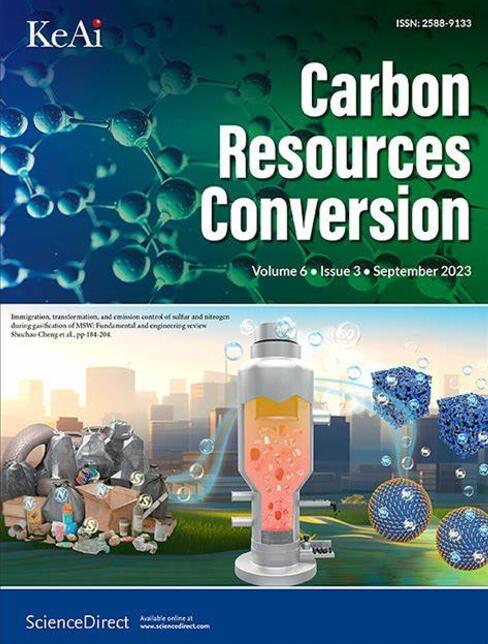镁生产过程的生命周期分析:能源消耗、碳排放和经济
IF 7.5
3区 环境科学与生态学
Q2 ENERGY & FUELS
引用次数: 0
摘要
镁因其优异的物理和化学性能在制造业中得到了广泛的应用,同时由于对环境的要求,对镁的需求量也在不断增加。作为世界上最大的金属镁生产国和出口国,中国在西部省份通过被称为皮金法的硅热法生产金属镁。然而,在中国东部地区,特别是在菱镁矿储量丰富的辽宁省,金属镁厂很少。镁的短缺限制了镁铸造工业和当地菱镁矿工业的发展。在应对气候变化挑战而建立的碳市场下,如何选择一条经济可行的镁生产路线,是决定辽宁镁产业发展的关键因素。本文基于中国生命周期数据库(CLCD),利用考虑不同地理环境、工艺设备和能源供应途径的数据,建立了6种不同金属镁生产工艺从摇篮到终点的能源消耗、温室气体排放和经济分析模型。研究了碳交易价格对六个过程经济绩效的影响。与目前国内广泛采用的工艺相比,以辽宁废菱镁矿为原料,以炼钢厂焦炉煤气为燃料的制镁新工艺在温室气体排放成本方面表现出最佳的经济效益。本文章由计算机程序翻译,如有差异,请以英文原文为准。
A life cycle analysis on magnesium production processes: Energy consumption, carbon emission and economics
Magnesium is widely used in manufacturing industry because of its excellent physical and chemical properties and has its increasing demand due to environmental requirements. China, as the world s biggest producer and exporter of metallic magnesium, produces metallic magnesium in its western provinces through the silico-thermic process known as the Pidgeon process. However, there are few metallic magnesium plants in eastern China, especially in Liaoning province where magnesite is rich in reserves. The short supply of magnesium has limited the growth of the magnesium casting industry and the local magnesite industry. Under the carbon market established to face the challenges of climate change, how to choose an economical and feasible route for magnesium production, is a key factor to determine the development of magnesium industry in Liaoning. In this paper, life cycle analysis models are developed to study the energy consumption, greenhouse gas (GHG) emissions, and economics from cradle to gate for six different metal magnesium production processes using data accounting for different geographical environments, process equipment, and energy supply pathways based on the Chinese Life Cycle Database (CLCD). The influence of carbon trading prices on economic performance of the six processes is also investigated. Compared with the current process widely used in China, the new magnesium production technology using Liaoning s abandoned magnesite as raw material and the coke oven gas from steelworks as fuel showed the best economic performance in terms of cost for greenhouse gas emissions.
求助全文
通过发布文献求助,成功后即可免费获取论文全文。
去求助
来源期刊

Carbon Resources Conversion
Materials Science-Materials Science (miscellaneous)
CiteScore
9.90
自引率
11.70%
发文量
36
审稿时长
10 weeks
期刊介绍:
Carbon Resources Conversion (CRC) publishes fundamental studies and industrial developments regarding relevant technologies aiming for the clean, efficient, value-added, and low-carbon utilization of carbon-containing resources as fuel for energy and as feedstock for materials or chemicals from, for example, fossil fuels, biomass, syngas, CO2, hydrocarbons, and organic wastes via physical, thermal, chemical, biological, and other technical methods. CRC also publishes scientific and engineering studies on resource characterization and pretreatment, carbon material innovation and production, clean technologies related to carbon resource conversion and utilization, and various process-supporting technologies, including on-line or off-line measurement and monitoring, modeling, simulations focused on safe and efficient process operation and control, and process and equipment optimization.
 求助内容:
求助内容: 应助结果提醒方式:
应助结果提醒方式:


